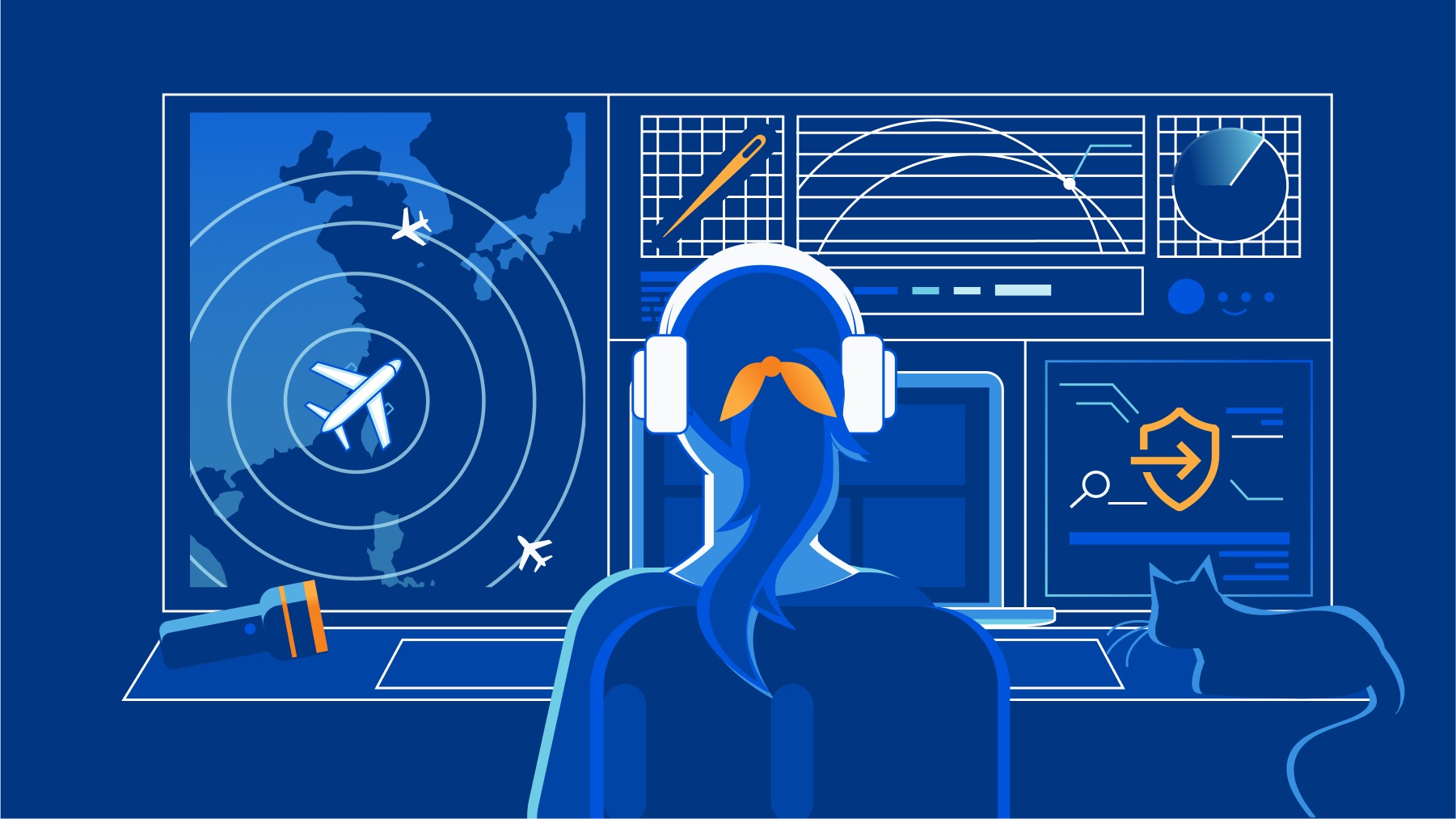Today, organisations of all shapes and sizes lack visibility and insight into the digital experiences of their end-users. This often leaves IT and network administrators feeling vulnerable to issues beyond their control which hinder productivity across their organisation. When issues inevitably arise, teams are left with a finger-pointing exercise. They’re unsure if the root cause lies within the first, middle or last mile and are forced to file a ticket for the respective owners of each. Ideally, each team sprints into investigation to find the needle in the haystack. However, once each side has exhausted all resources, they once again finger point upstream. To help solve this problem, Cloudflare is building a new product, Digital Experience Monitoring, which will enable administrators to pinpoint and resolve issues impacting end-user connectivity and performance.
The Vision
Over the last year, the company has received an overwhelming amount of feedback that users want to see the intelligence that Cloudflare possesses from its unique perspective, helping power the Internet embedded within our Zero Trust platform. Today, Cloudflare is excited to announce just that. Throughout the coming weeks, the company will be releasing a number of features for its Digital Experience Monitoring product which will provide unparalleled visibility into the performance and connectivity of an enterprises’ users, applications, and networks.
With data centers in more than 275 cities across the globe, Cloudflare handles an average of 39 million HTTP requests and 22 million DNS requests every second. And with more than one billion unique IP addresses connecting to its network, the company has one of the most representative views of Internet traffic on the planet. This unique point of view on the Internet will be able to provide organisations with deep insight into the digital experience of their users. Digital Experience Monitoring can be thought of as the air traffic control tower of a company’s Zero Trust deployment, providing data-driven insights needed to help each user arrive at their destination as quickly and smoothly as possible.
What is Digital Experience Monitoring?
When Cloudflare began to research Digital Experience Monitoring, it started with the user. Users want a single dashboard to monitor user, application, and network availability and performance. Ultimately, this dashboard needs to help users cohesively understand the minute-by-minute experiences of their end-users so that they can quickly and easily resolve issues impacting productivity. Simply put, users want hop by hop visibility into the network traffic paths of each and every user in their organisation.
From conversations with users, Cloudflare understands that providing this level of insight has become even more critical and challenging in an increasingly work-from-anywhere world.
With this product, it wants to empower organisations to answer the hard questions. The questions in the kind of tickets everyone wishes to avoid when they appear in the queue like “Why can’t the CEO reach SharePoint while traveling abroad?”. Could it have been a poor Wi-Fi signal strength in the hotel? High CPU on the device? Or something else entirely?
Without the proper tools, it’s nearly impossible to answer these questions. Regardless, it’s all but certain that this investigation will be a time-consuming endeavor whether it has a happy ending or not. Traditionally, the investigation will go something like this. IT professionals will start their investigation by looking into the first-mile which may include profiling the health of the endpoint (i.e. CPU or RAM utilisation), Wi-Fi signal strength, or local network congestion. With any luck at all, the issue is identified, and the pain stops here.
Unfortunately, teams rarely have the tools required to prove these theories out so, frustrated, they move on to everything in between the user and the application. Here they might be looking for an outage or a similar issue with a local Internet Service Provider (ISP). Again, even if there is reason to believe that this is the issue, it can be difficult to prove this beyond a reasonable doubt.
Reluctantly, they move onto the last mile. Here they’ll be looking to validate that the application in question is available and if so, how quickly we can establish a meaningful connection (Time to First Byte, First Contentful Paint, packet loss) to this application. More often than not, the lead investigator is left with more questions than answers after attempting to account for the hop by hop degradation. Then, by the time the ticket can be closed, the CEO has boarded a flight back home and the issue is no longer relevant.
With Digital Experience Monitoring, Cloudflare has set out to build the tools needed to quickly find the needle in the haystack and resolve issues related to performance and connectivity. However, it also understands that availability and performance are just shorthand measures for gauging the complete experience of customers. Of course, there is much more to a good user experience than just insights and analytics. The company will continue to pay close attention to other key metrics around the volume of support tickets, contact rate, and time to resolution as other significant indicators of a healthy deployment. Internally, when shared with Cloudflare, this telemetry data will help enable its support teams to quickly validate and report issues to continuously improve the overall Zero Trust experience.
“As CIO, I am focused on outfitting Cintas with technology and systems that help us deliver on our promises for the 1 million plus businesses we serve across North America. As we leverage more cloud-based technology to create differentiated experiences for our customers, Cloudflare is an integral part of delivering on that promise.” – Matthew Hough, CIO, Cintas (Fortune 470)
A look ahead
In the coming weeks, Cloudflare will be launching three new features.
Zero Trust Fleet Status
One of the common challenges of deploying software is understanding how it is performing in the wild. For Zero Trust, this might mean trying to answer how many end-users are running the device agent, Cloudflare WARP, for instance. Then, of those users, there may be need to see how many users have enabled, paused, or disabled the agent during the early phases of a deployment. Shortly after finding these answers, IT teams may want to see if there is any correlation between the users who pause their WARP agent and the data center through which they are connected to Cloudflare. These are the kinds of answers organisations will be able to find with Zero Trust Fleet Status. These insights will be available at both an organisational and per-user level.
Synthetic Application Monitoring
Oftentimes, the issues being reported to IT professionals will fall outside their control. For instance, an outage for a popular SaaS application can derail an otherwise perfectly productive day. But, these issues would become much easier to address if they were known before users began to report them. For instance, this foresight would allow IT teams to proactively communicate issues to the organisation and get ahead of the flood of IT tickets destined for the inbox. With Synthetic Application Monitoring, Cloudflare will be providing Zero Trust administrators the ability to create synthetic application tests to public-facing endpoints.
With this tool, users can initiate periodic traceroute and HTTP GET requests destined for a given public IP or hostname. The dashboard will then surface global and user-level analytics enabling administrators to easily identify trends across their organisation. Users will also have the ability to filter results down to identify individual users or devices who are most impacted by these outages.
Network Path Visualisation
Once an issue with a given user or device is identified through the Synthetic Application Monitoring reports highlighted above, administrators will be able to view hop-by-hop telemetry data outlining the critical path to public facing endpoints. Administrators will have the ability to view this data represented graphically and export any data which may be relevant outside the context of Zero Trust.
What’s next
According to Gartner, “by 2026 at least 60% of I&O leaders will use Digital Experience Monitoring (DEM) to measure application, services and endpoint performance from the user’s viewpoint, up from less than 20% in 2021.” The items at the top of our roadmap will be just the beginning to Cloudflare’s approach to bringing its intelligence into Zero Trust deployments.
Perhaps what we’re most excited about with this product is that users on all Zero Trust plans will be able to get started at no additional cost and then upgrade their plans for more advanced features and usage moving forward.









Discussion about this post